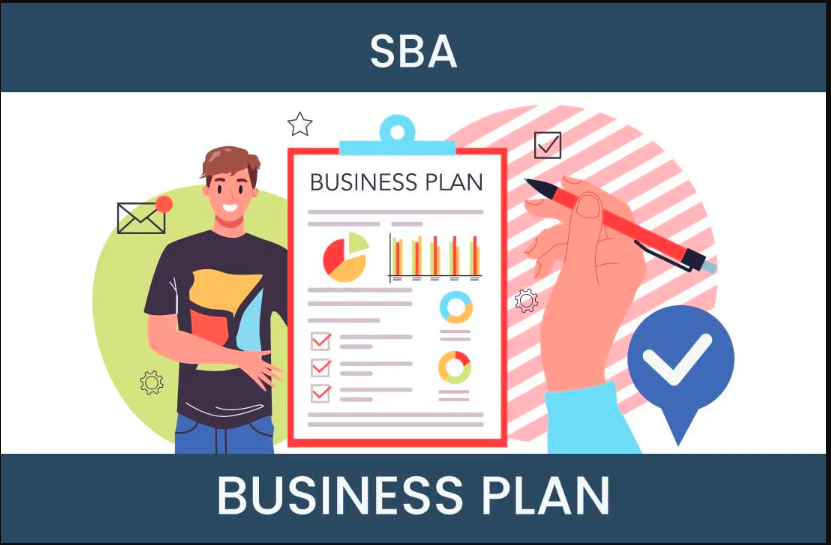
An organizational chart is a visual representation of the structure of your business, detailing roles, responsibilities, and relationships between individuals within the company. Including an organizational chart in your SBA business plan is crucial for several reasons. It not only provides a clear overview of your business structure to potential investors and lenders but also helps ensure efficient management and communication within your organization. In this article, we will explore the importance of an organizational chart in your SBA business plan and how it can contribute to the success of your business.
1. Clarifying Roles and Responsibilities
One of the primary functions of an organizational chart is to clarify the roles and responsibilities of each team member. This clarity is essential for efficient business operations.
Defining Roles: An organizational chart clearly outlines who is responsible for what tasks and duties. This helps avoid confusion and ensures that everyone knows their specific responsibilities.
Hierarchy and Reporting Lines: By defining the hierarchy and reporting lines, an organizational chart ensures that employees know who they report to and who they can turn to for support or guidance.
Example: In a small business, the organizational chart might show the owner at the top, followed by department heads (e.g., marketing, sales, operations), and then team members within each department. This visual representation helps all employees understand their position within the company.
2. Enhancing Communication and Coordination
Effective communication and coordination are vital for the success of any business. An organizational chart plays a significant role in facilitating these aspects.
Communication Flow: An organizational chart helps establish clear communication channels within the organization. It shows how information should flow between different levels and departments.
Coordination of Activities: By clearly defining the relationships between different roles and departments, an organizational chart helps coordinate activities and ensures that everyone is working towards common goals.
Example: In a project-based company, the organizational chart can help team members understand who they need to communicate with for specific project-related tasks, ensuring smooth coordination and timely completion of projects.
3. Supporting Growth and Scalability
As your business grows, the organizational structure will need to evolve. An organizational chart helps support this growth by providing a framework for scalability.
Planning for Growth: An organizational chart helps identify potential gaps in your current structure and areas where new roles may be needed as the business expands.
Smooth Onboarding: For new hires, an organizational chart provides a clear understanding of the company’s structure and their place within it, facilitating a smoother onboarding process.
Example: A startup might begin with a flat organizational structure. As it grows, the chart can evolve to include additional layers of management and new departments, ensuring the business can scale effectively.
4. Attracting Investors and Lenders
When seeking funding from investors or applying for an SBA loan, presenting a clear organizational chart can enhance your business plan’s credibility.
Demonstrating Structure: An organizational chart shows that your business is well-organized and has a clear management structure, which can instill confidence in potential investors and lenders.
Highlighting Key Personnel: The chart allows you to showcase the expertise and experience of your key personnel, demonstrating that you have a capable team in place to execute your business plan.
Example: In an SBA business plan, including an organizational chart that highlights the experience of your management team and key advisors can help convince lenders that your business is well-positioned for success.
5. Facilitating Strategic Planning
Strategic planning is essential for long-term success, and an organizational chart plays a crucial role in this process.
Identifying Strengths and Weaknesses: By visually mapping out your organization, you can identify areas of strength and potential weaknesses or gaps that need to be addressed.
Resource Allocation: An organizational chart helps in the efficient allocation of resources, ensuring that each department or team has the necessary personnel and support to achieve their objectives.
Example: During strategic planning sessions, an organizational chart can be used to discuss potential restructuring or the addition of new roles to better align with the company’s strategic goals.
6. Enhancing Employee Morale and Motivation
A clear organizational structure can positively impact employee morale and motivation by providing transparency and opportunities for career growth.
Transparency: An organizational chart provides transparency regarding the company’s structure and how decisions are made, fostering a sense of trust among employees.
Career Development: Employees can see potential career paths within the organization, which can motivate them to develop their skills and aspire to higher positions.
Example: An organizational chart that shows clear paths for advancement can help employees understand how they can progress within the company, increasing job satisfaction and retention.
7. Compliance and Legal Requirements
In some cases, having a clear organizational structure is necessary for compliance with legal and regulatory requirements.
Regulatory Compliance: Certain industries require businesses to have a defined organizational structure for compliance purposes. An organizational chart helps ensure that your business meets these requirements.
Accountability: An organizational chart establishes accountability within the organization, which can be crucial in legal or regulatory situations.
Example: In the healthcare industry, regulatory bodies may require detailed organizational charts to ensure compliance with standards and regulations, such as those related to patient care and data privacy.
Conclusion
In conclusion, an organizational chart is a vital component of your SBA business plan. It clarifies roles and responsibilities, enhances communication and coordination, supports growth and scalability, attracts investors and lenders, facilitates strategic planning, enhances employee morale and motivation, and ensures compliance with legal and regulatory requirements. By including a well-defined organizational chart in your business plan, you demonstrate that your business is well-organized, capable of achieving its goals, and ready for future growth. This not only strengthens your business plan but also positions your company for long-term success.



